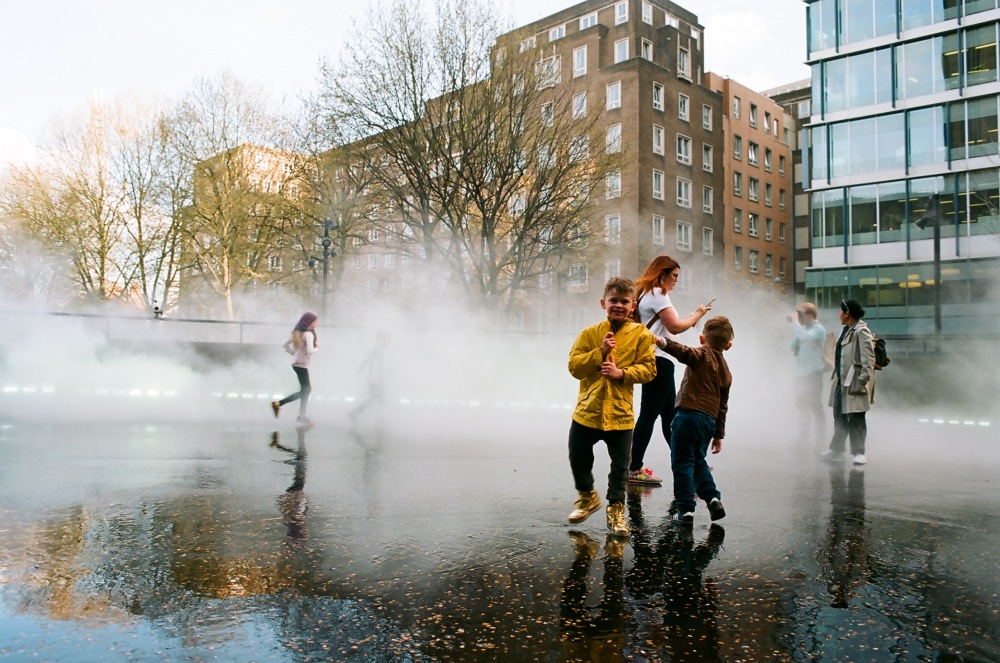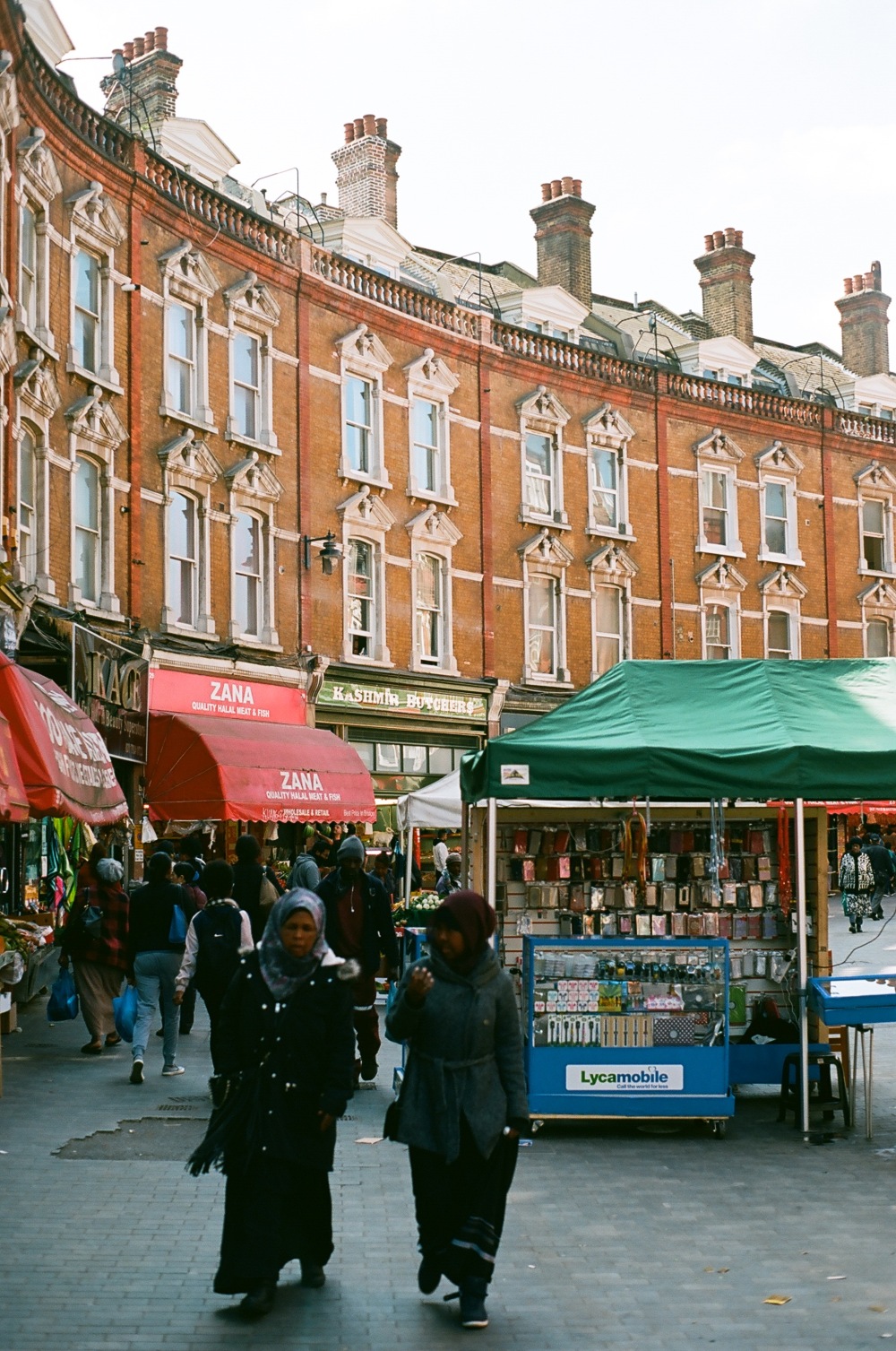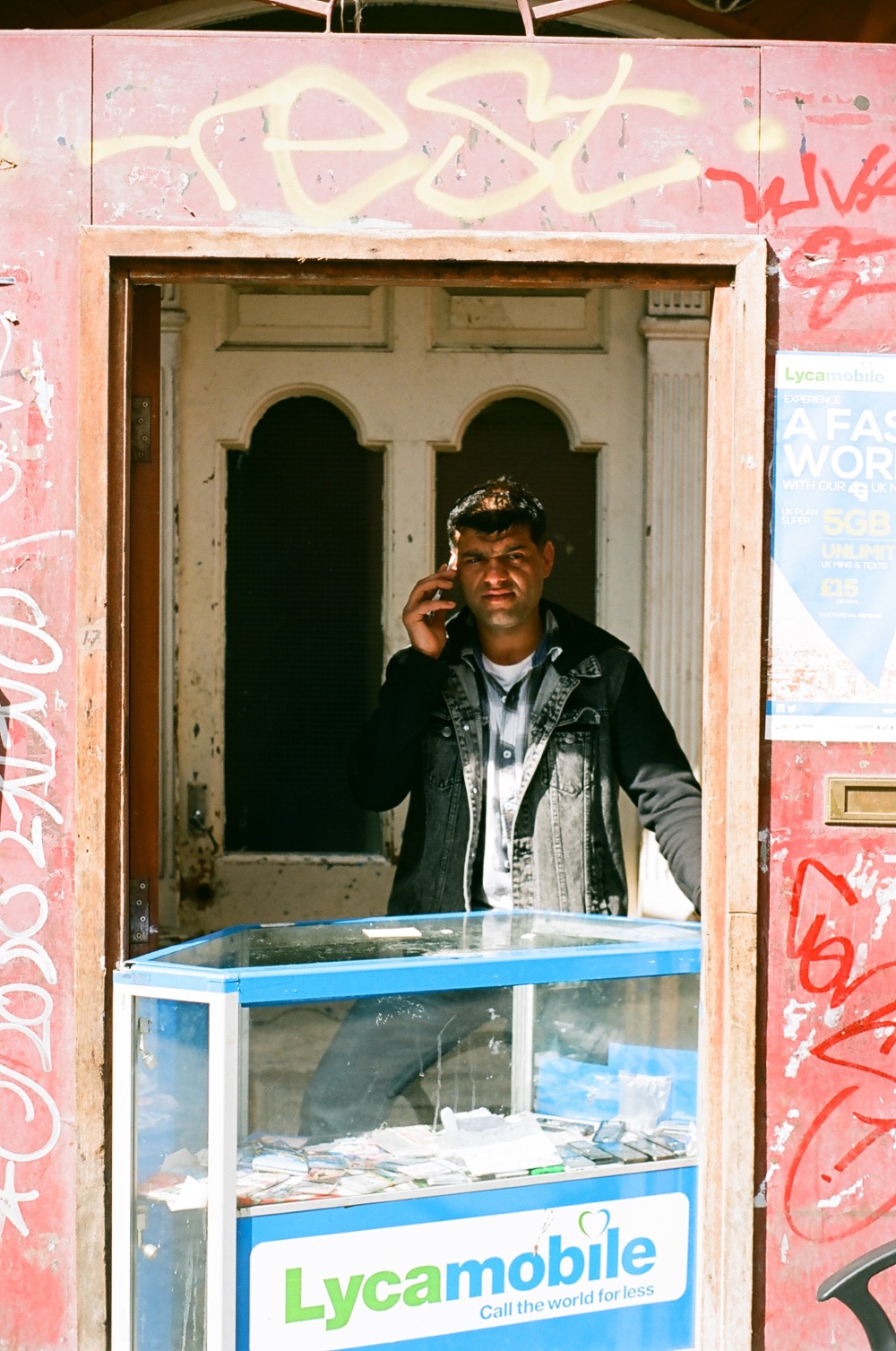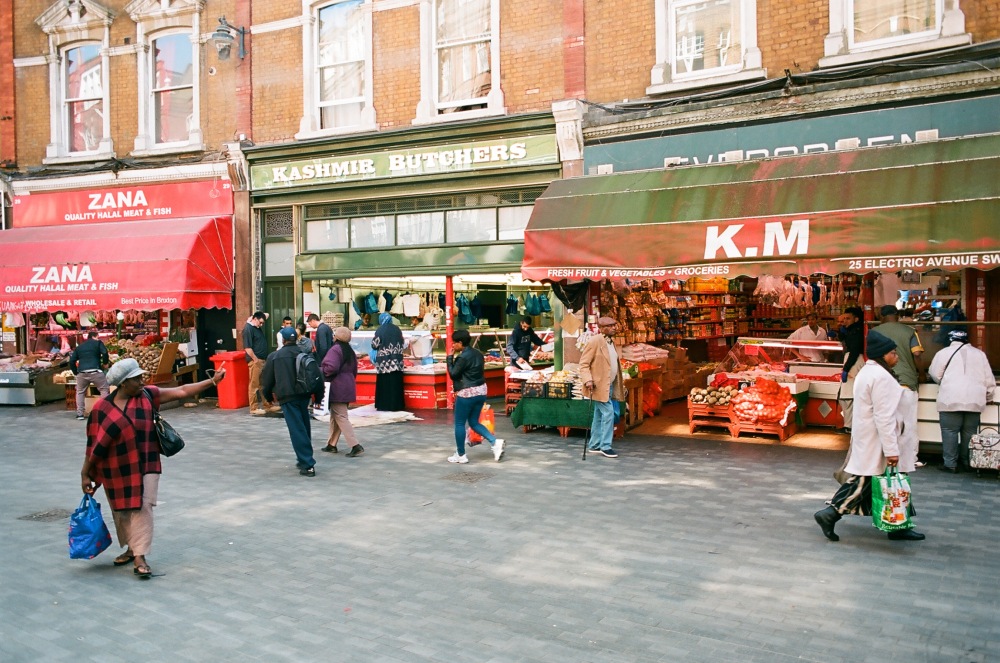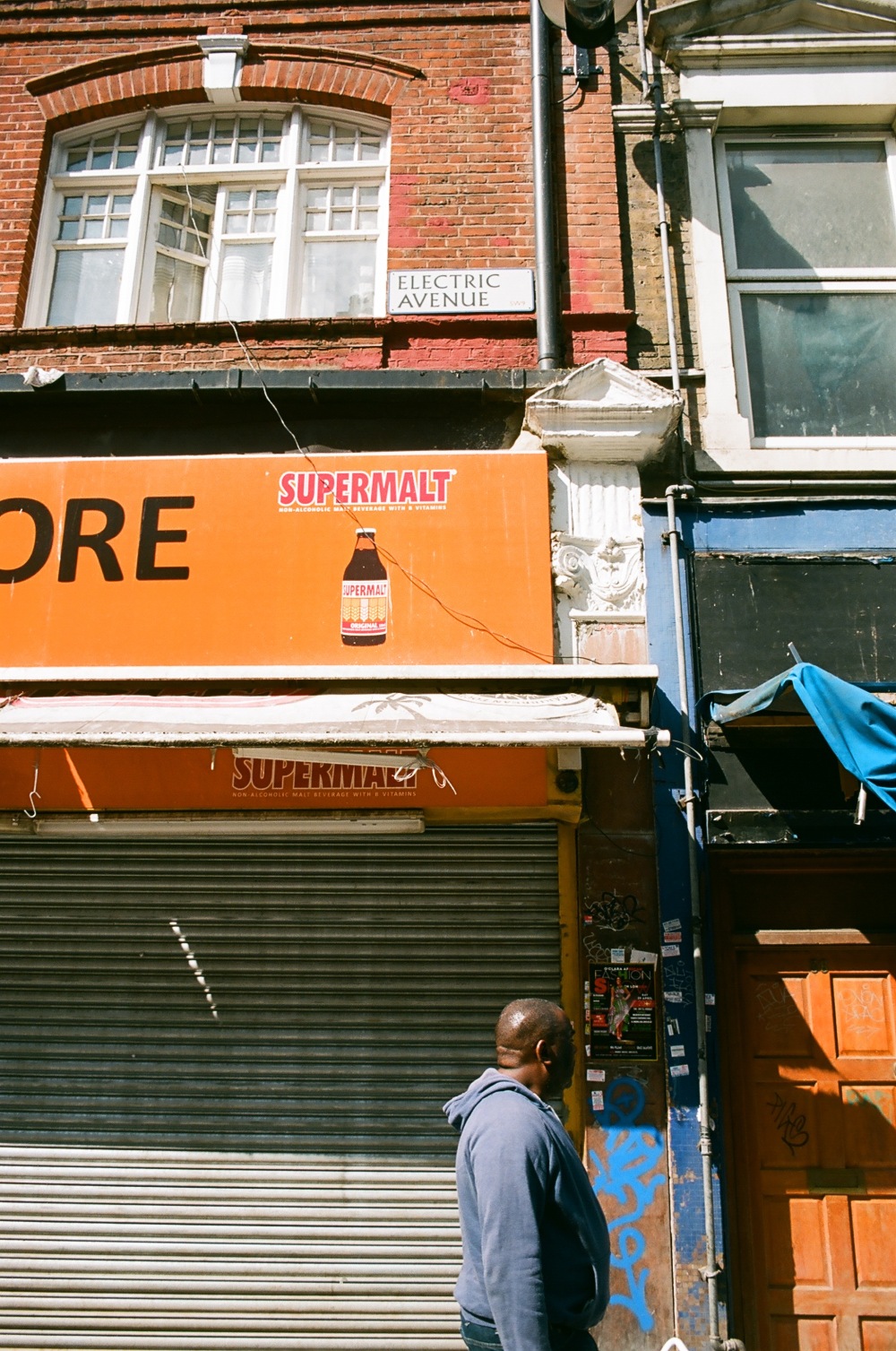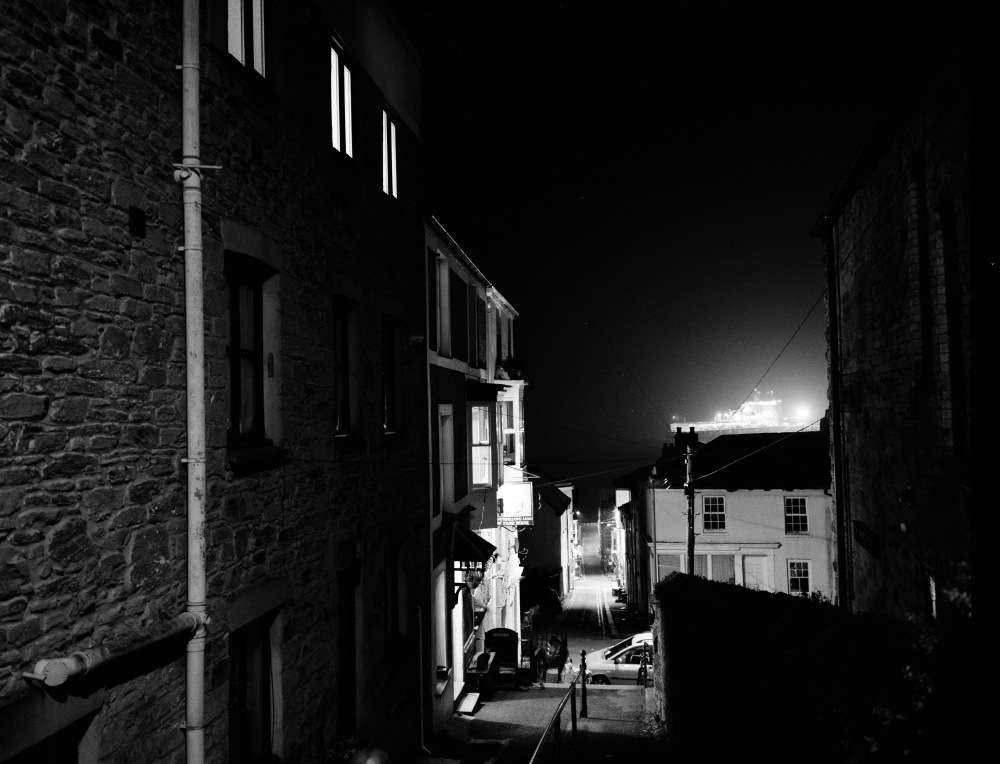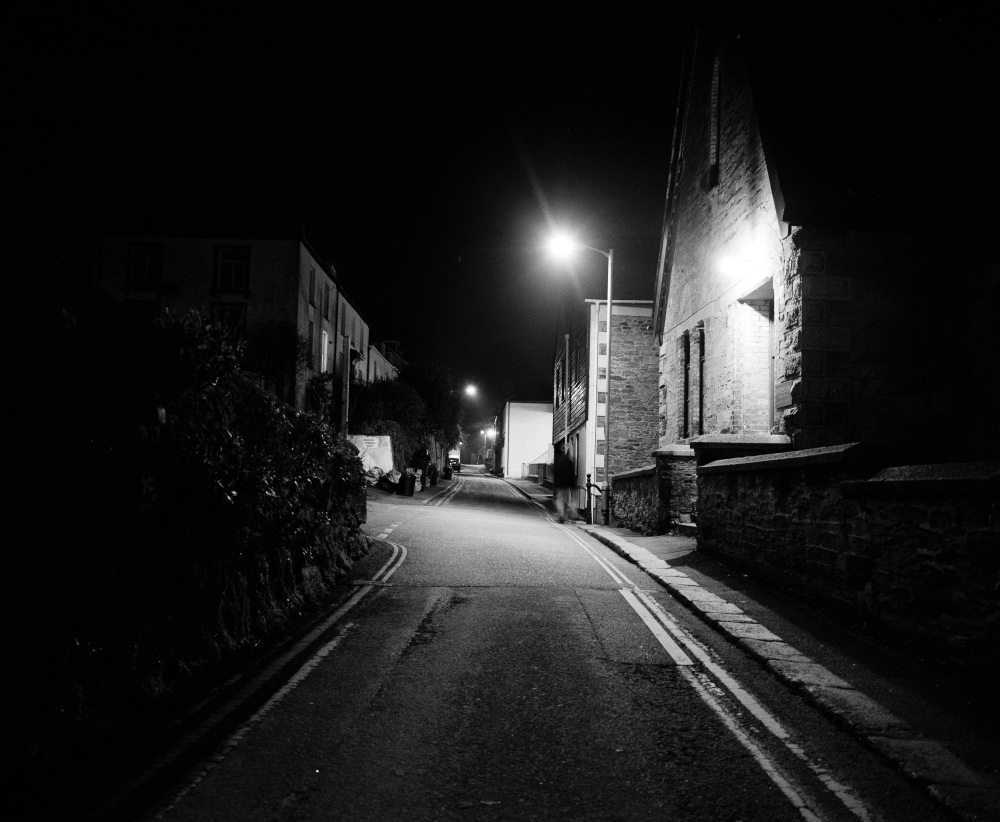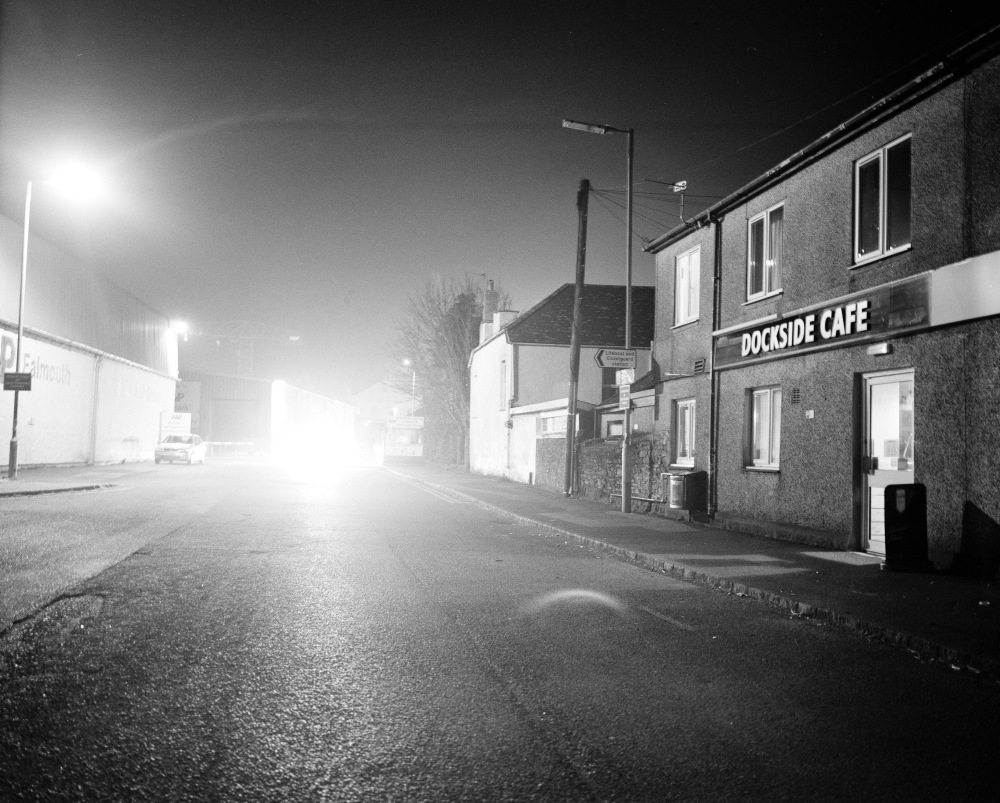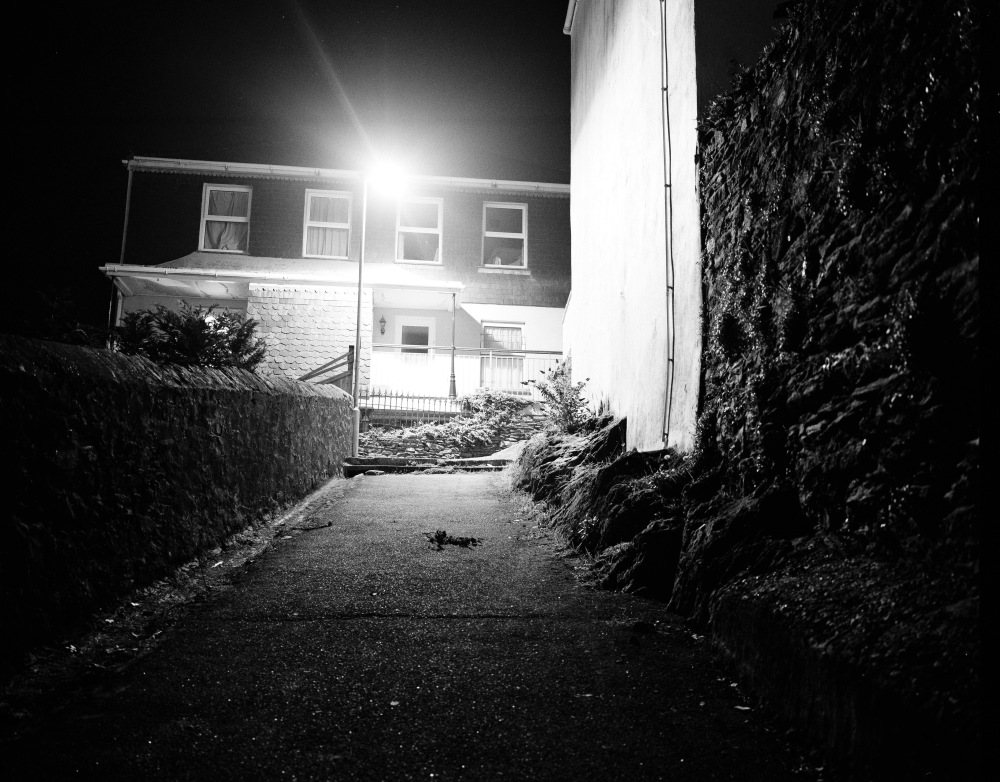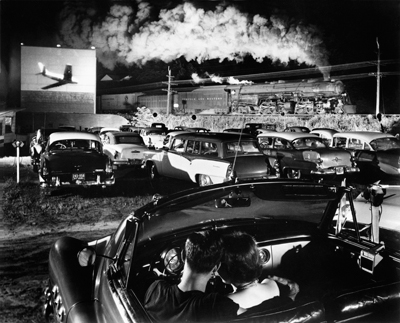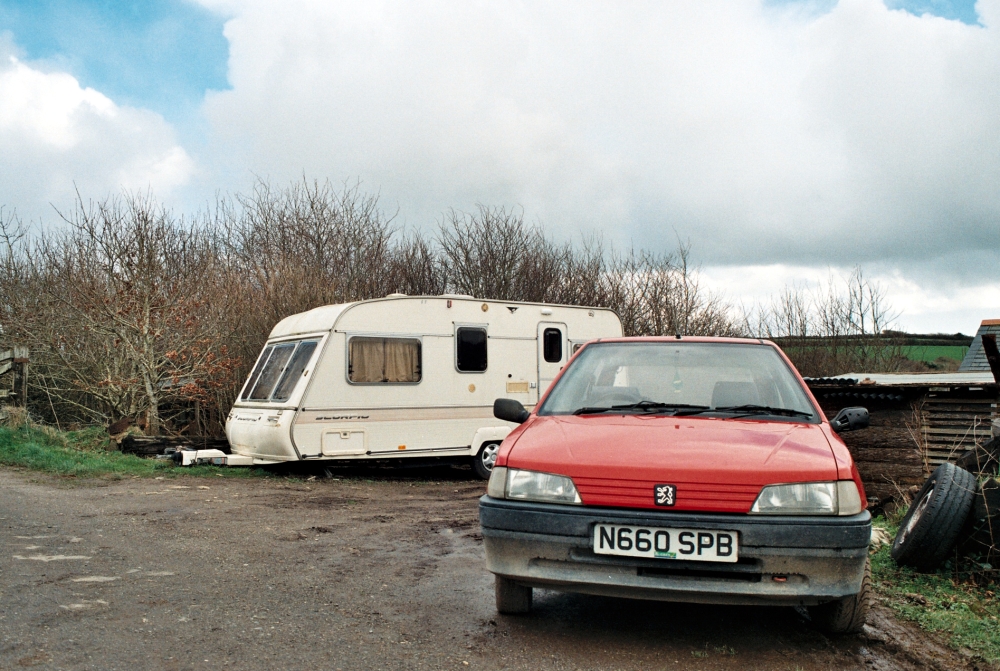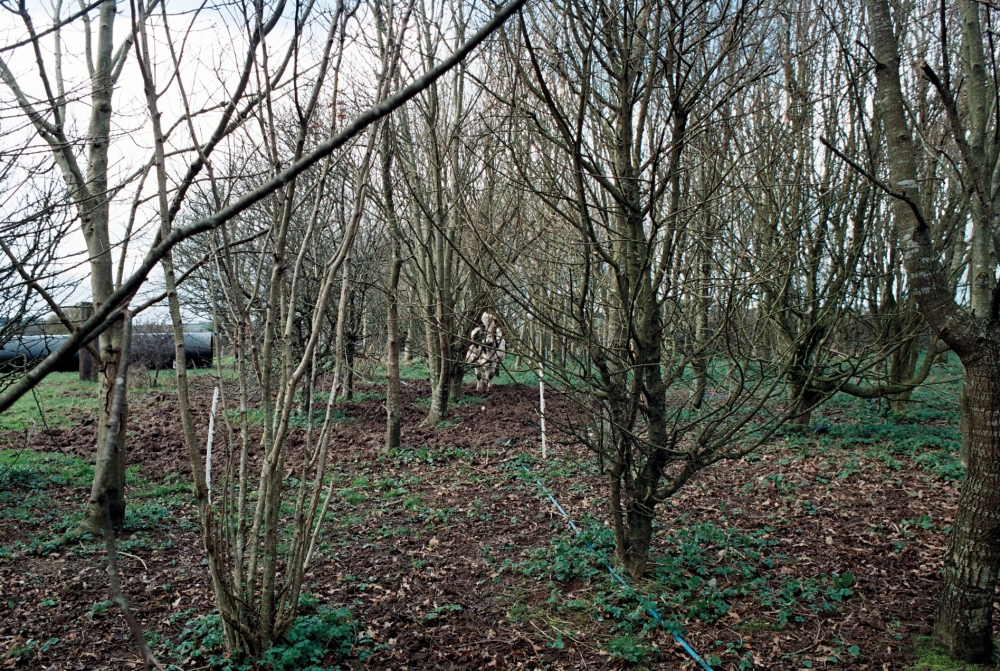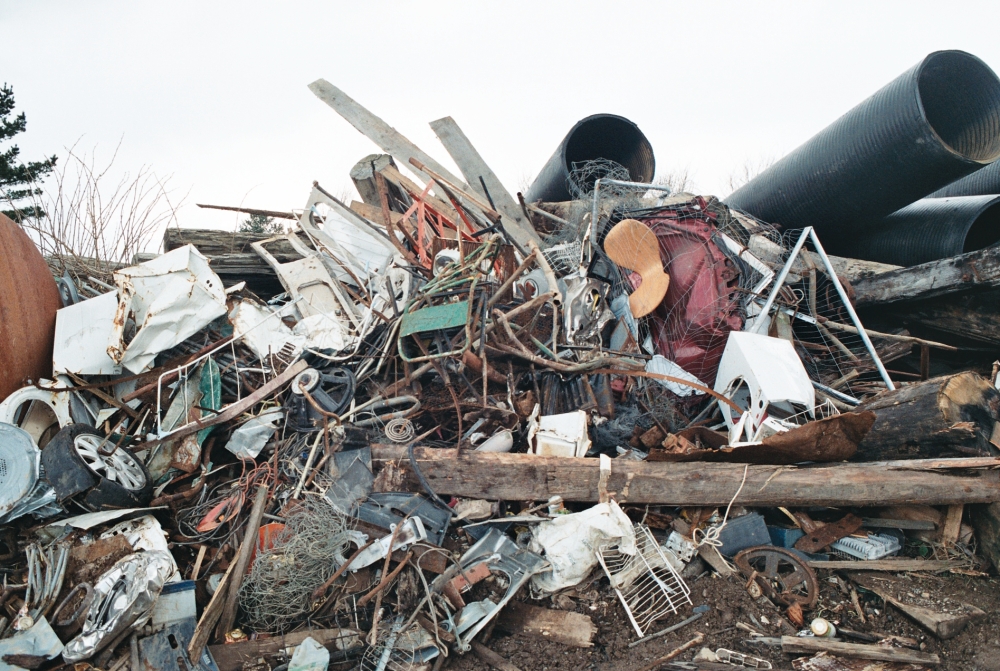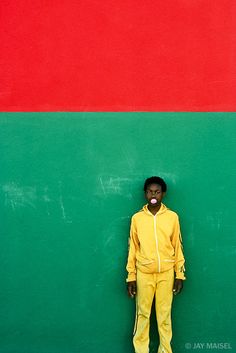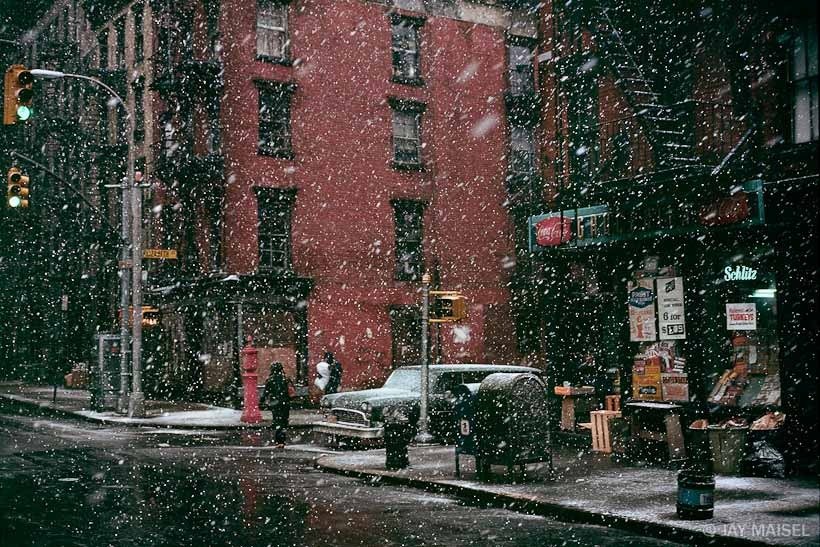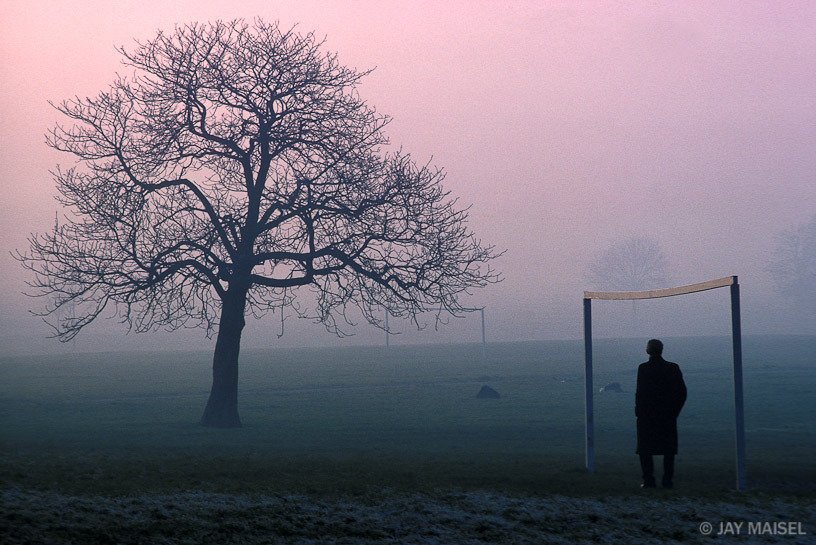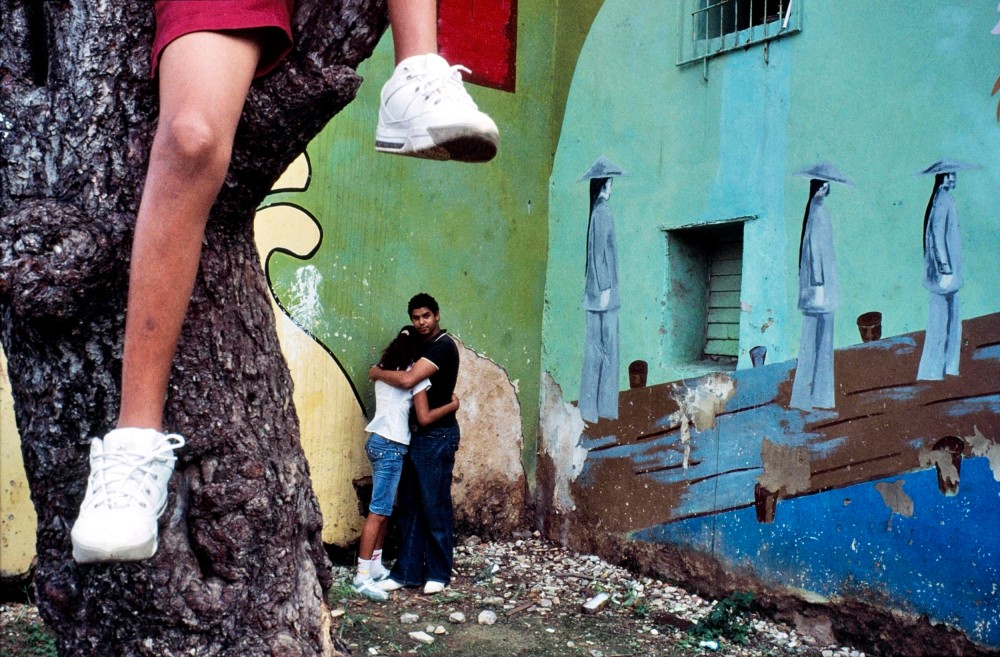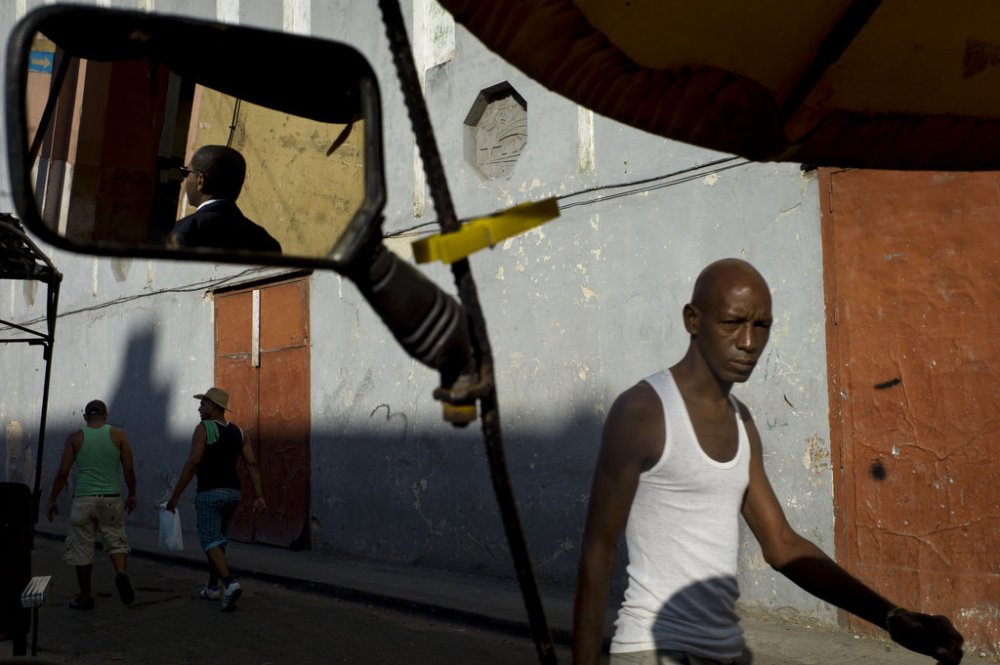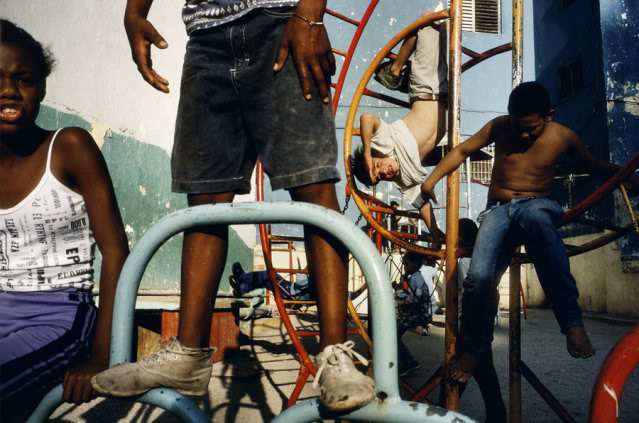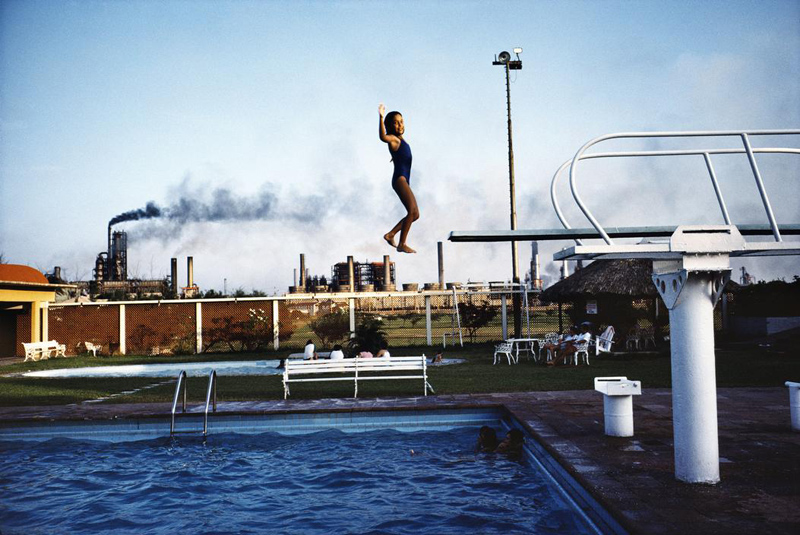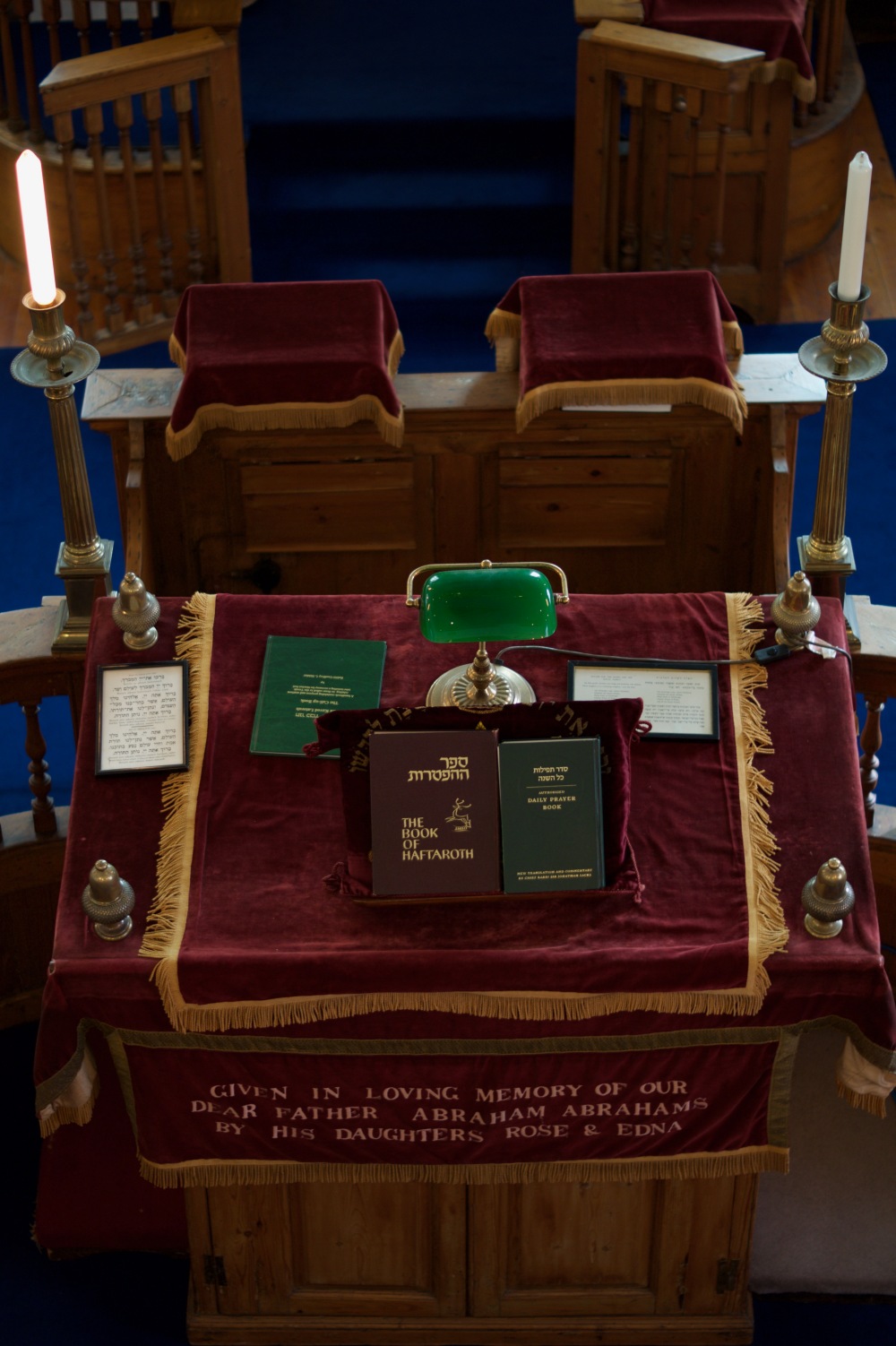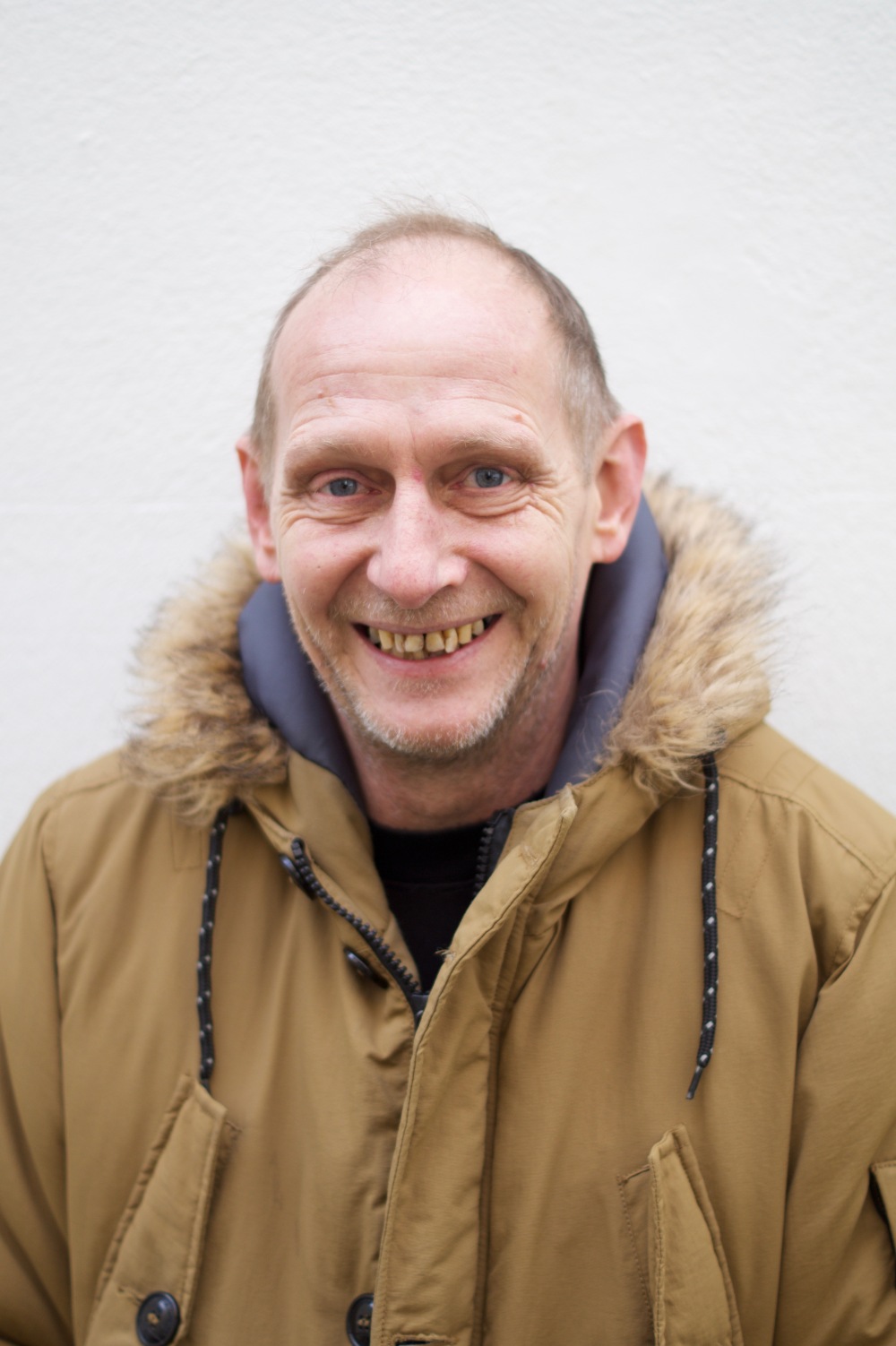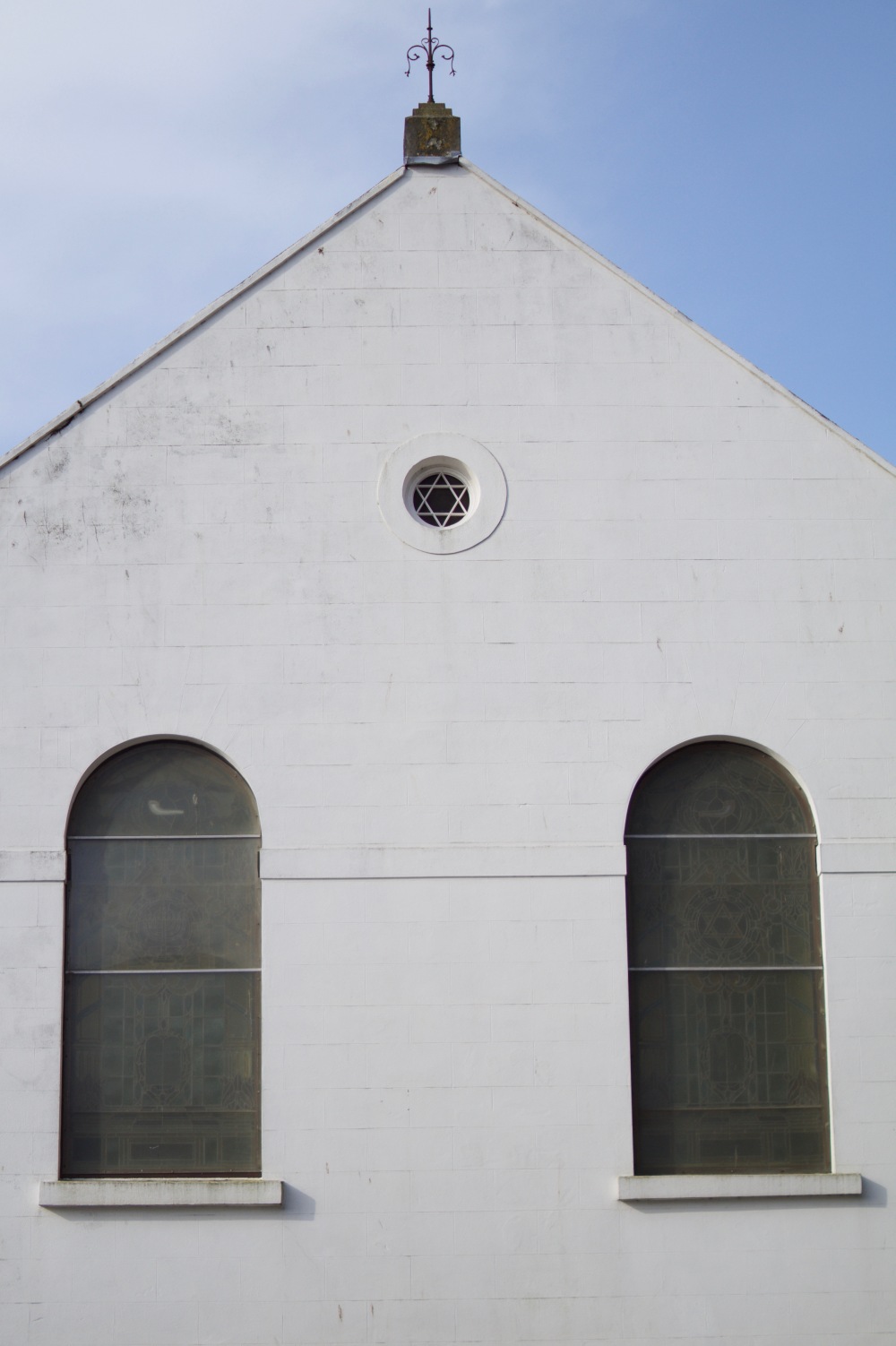PEP 160 Module Reflective Log
So for this PEP 160 module I decided to pursue four different stories, the Holifield Farm Project, exploring the subcultures in the Stratford Centre, the early morning Smithfield Meat Market and documenting The Orwells’ live show.
To start off with I’ll dive right in to how I found these stories and how things went from there. So for the Holifield Farm Project, I knew I was interested in doing a story about a community that’s involved with sustainable energy and cares about the environment. From then on it was fairly straight forward, I did a quick browser search of any communities involved in any of that in Cornwall, and up came the Holifield Farm Project. I gave them a call and quickly arranged for a time that I could take a trip to the farm and start on in with this story. I made a total of three visits to the farm, the first was the most disorganised seeing as the man that runs the place wasn’t aware that I was going to be there, so I went on a stroll and photographed what I could and it wound up being the most successful trip to the farm. The next two visits I was able to see what it is that Rob does on the farm and I was able to document Rob and Westley working on the hostel. However, when I got around to developing the rolls of film from the second shoot I’d greatly overexposed a lot of the photographs and had a lot of out of focus shots. When I went back the third time it was to see what it’s like for people living on the farm, so I spent some time with Westley in his caravan trying to photograph him in his space. I ran into some more problems here and still struggled to keep the images in focus and properly exposed, which was frustrating. I’ve continuously run into the same problem over several shoots and this would have to be a big takeaway from this module. In terms of trying to document stories through photography, especially when shooting analog, it’s really important to take time to think about the correct exposures and sort out focusing.
In terms of the double page spreads, I modelled them after the Patagonia Environmental and Social Initiatives Magazine which I found on Issuu. (see below)
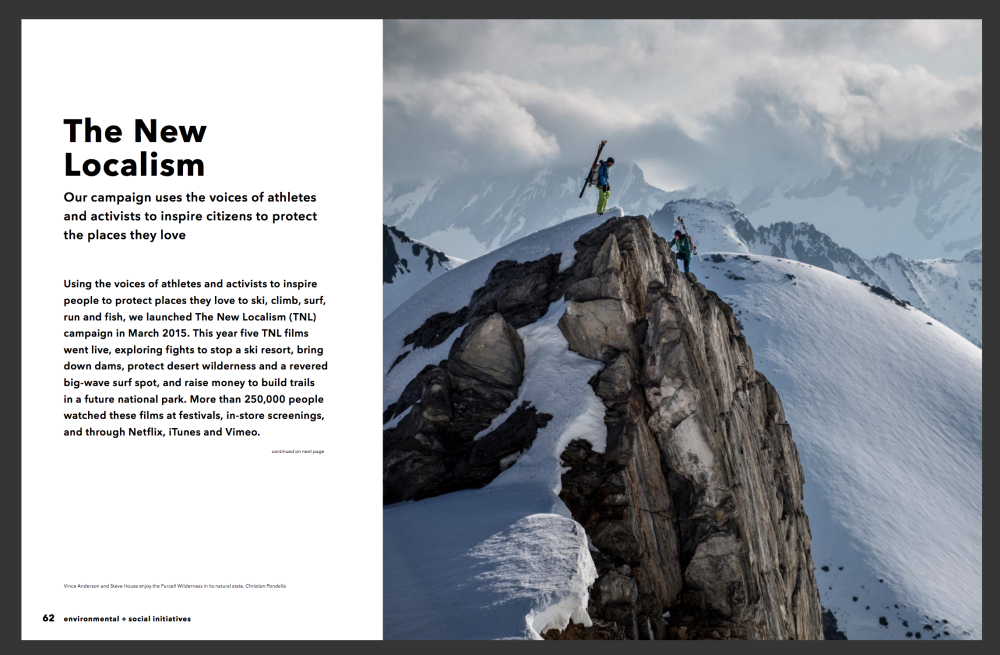
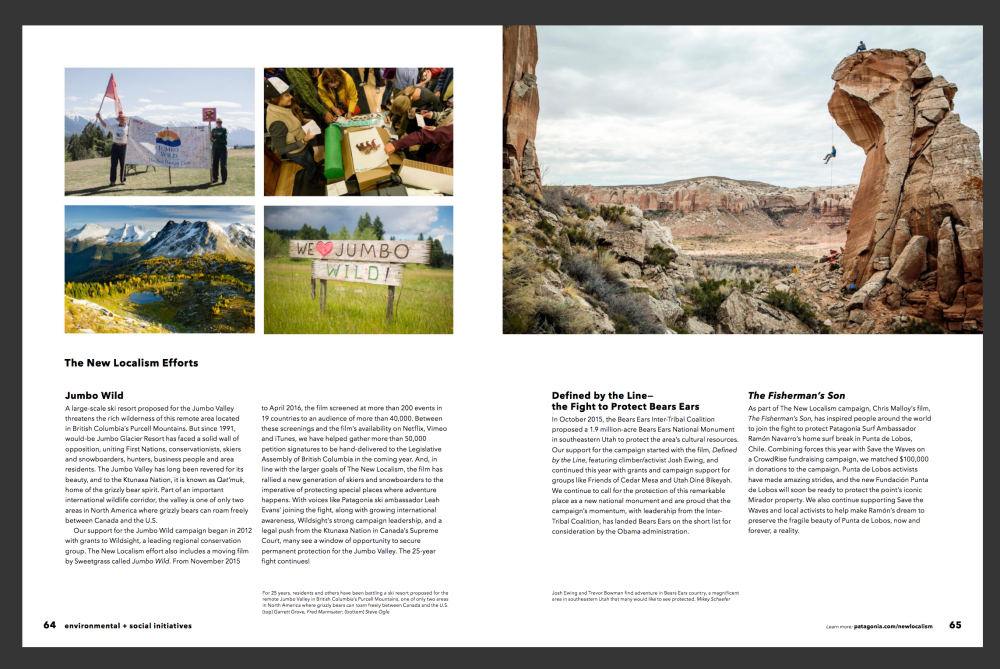
I chose this particular magazine because it had the photograph to writing ratio that I was looking for as well as a minimalist style. Seeing as it was my first time using InDesign I searched for minimalist designs for all the spreads because I really struggled using InDesign and don’t know how to add any shapes or special features. I also just like how minimalist magazines look aesthetically so it’s a bit of a win win.
So here’s a look at the spreads I did for the Holifield Farm Project:
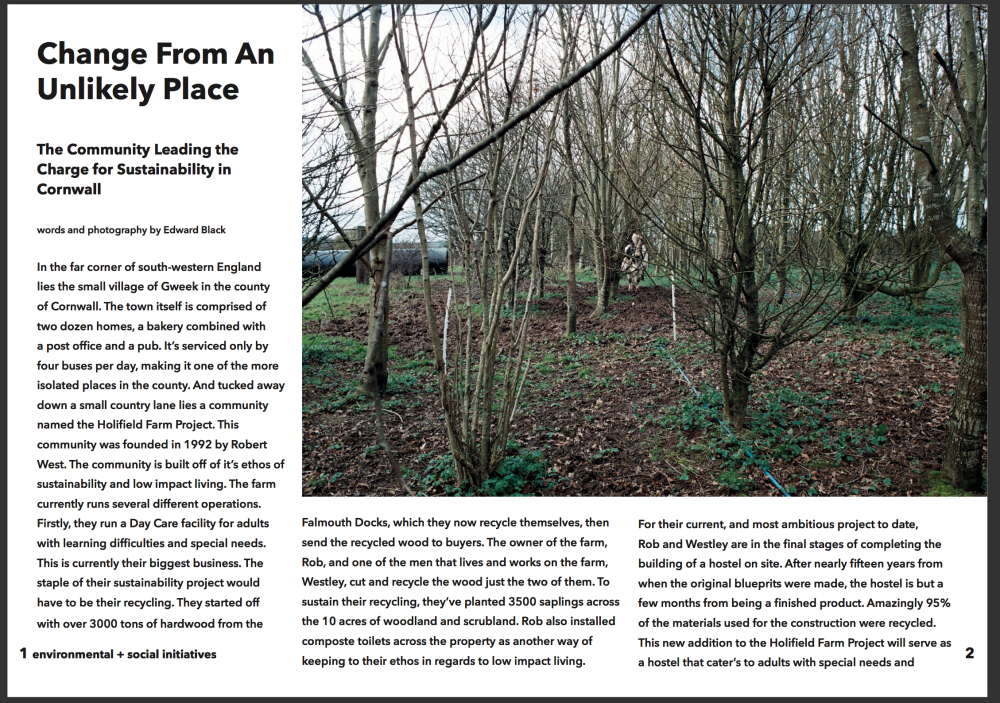
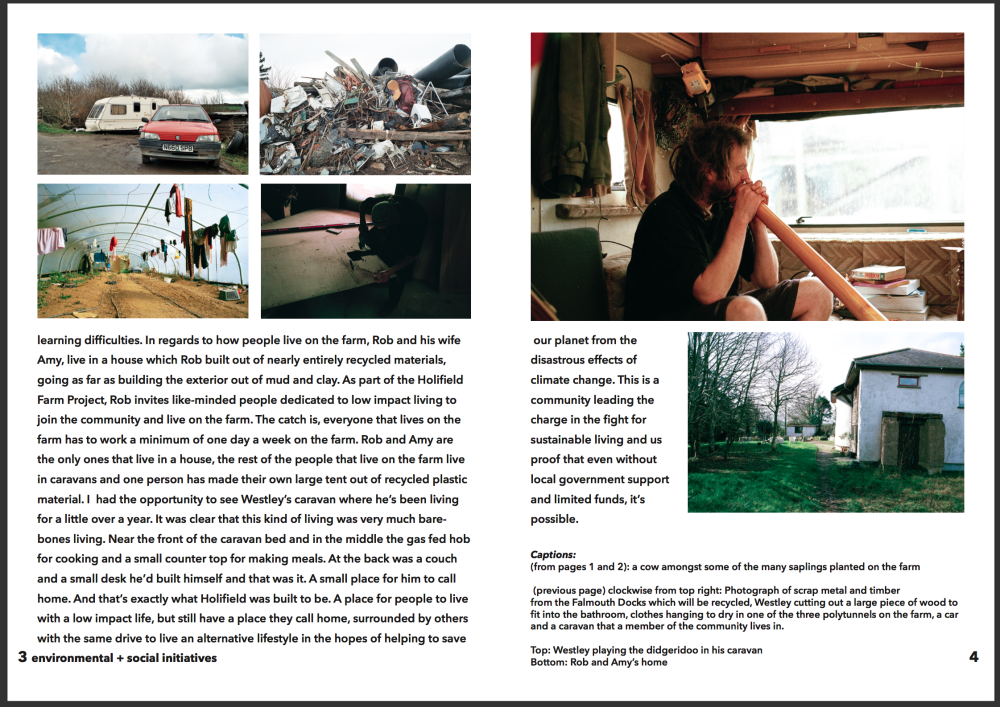
So for this spread I went to http://www.myfonts.com and was able to find this particular font on InDesign, which was the Avenir Next font. I tried to make the layouts similar by using similar spacing between words and the pictures. This spread also used photographs from my SDA.
One thing I definitely noticed whilst doing this spread is that I’ve really struggled with my writing. I’ve never really done journalistic writing before so it was challenging for me to have a fluent and engaging style of writing. I would definitely say that my writing is something that needs a lot of improvement and is something that I intend to work on over the coming months.
Now, moving on, the second spread I’d like to write about would have to be the spread I did on The Orwells.
In March I went back to London and did a shoot of my cousin’s band playing at Scala. It was my first time ever shooting a gig so it was a totally new experience, which I really enjoyed. Fortunately I was able to nail my focusing down better and took more time with my shots. I noticed that shooting analog I miss what would be good shots whilst reloading film or trying to focus shots, which is one of those things that I’ve learned to just accept and not worry too much over what photographs I missed and instead focus on the ones I’ve got.
For the double page spreads I again looked to Issuu and found a California based music and fashion magazine called Quality Time. They have a minimalist design which I did my best to model mine after.
Quality Time Spreads:
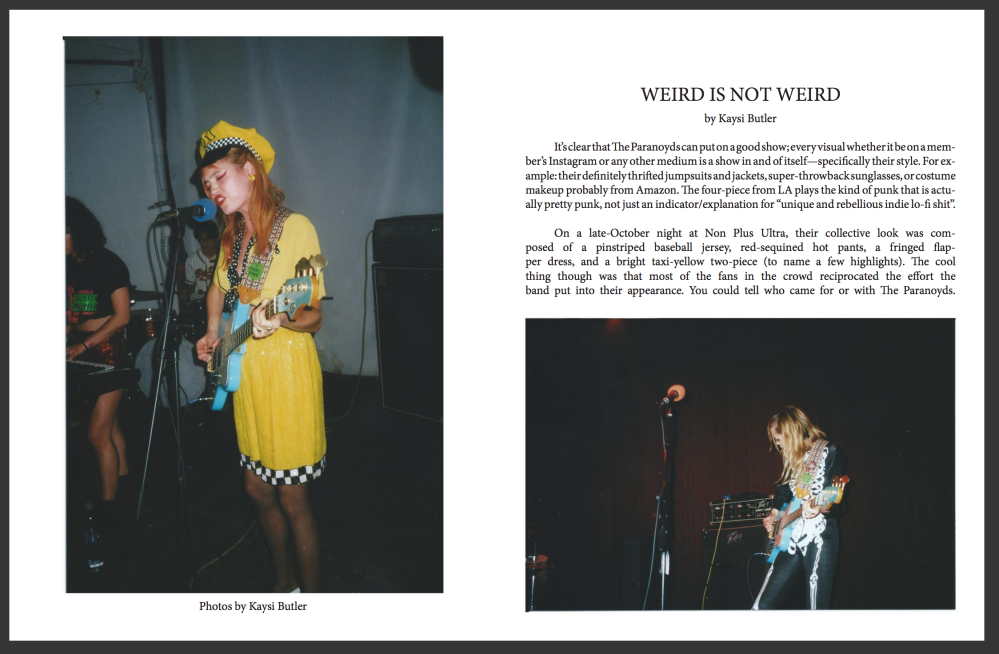
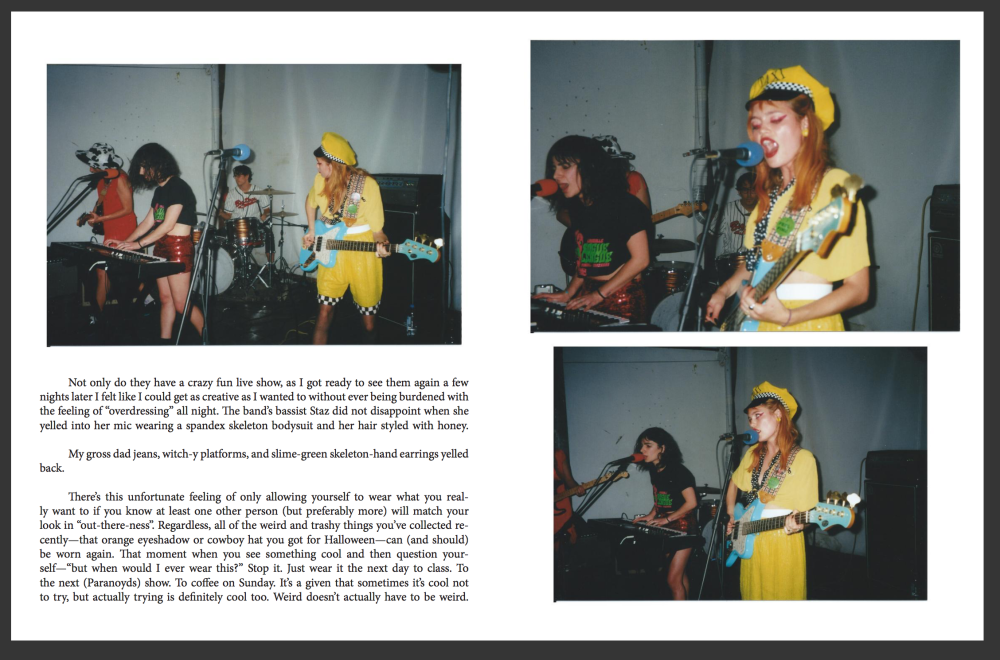
I tried to use similar spacing between images and was able to find the font from http://www.myfonts.com and used the Adobe Devangari font.
My spreads:
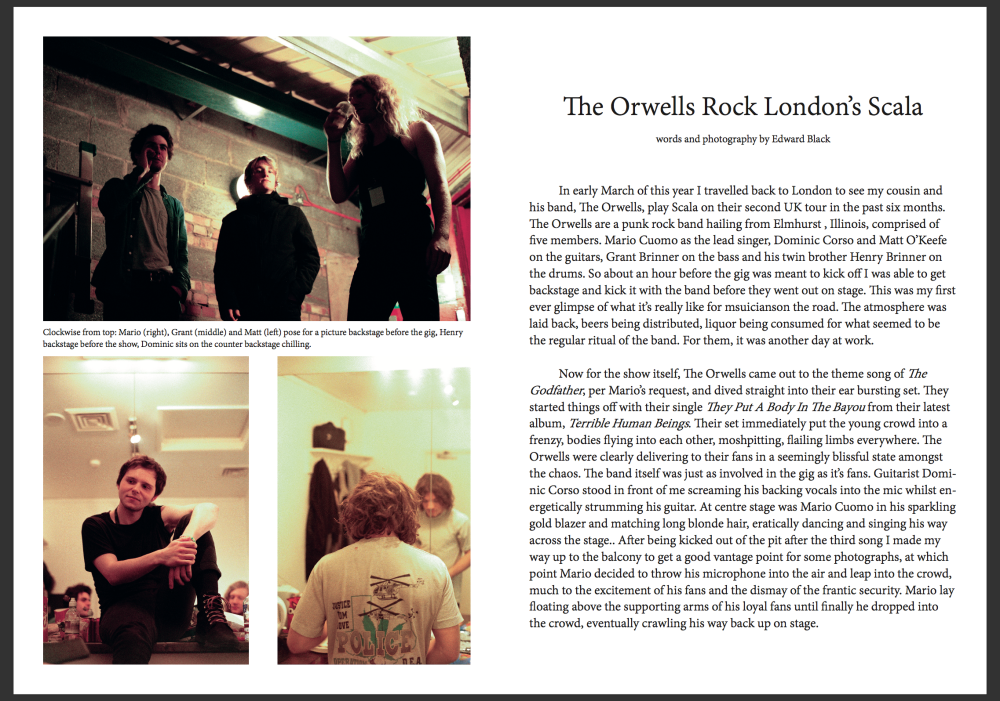
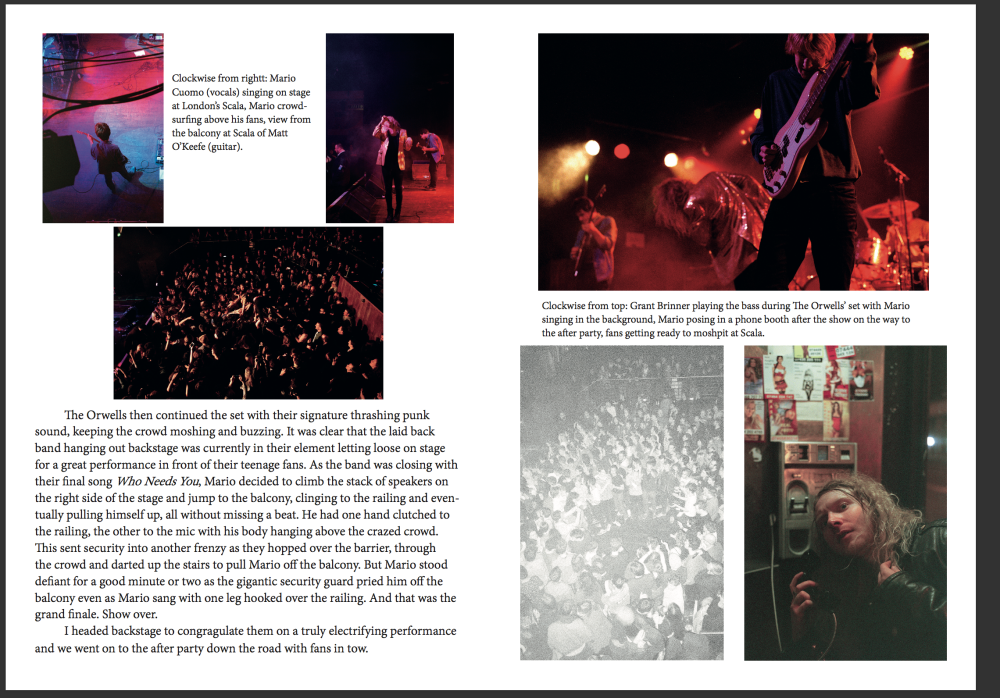
I thought I was reasonably successful in modelling my spreads after Quality Time, the main difference being I added captions for the images, where Quality Time does not. I would say that the captions do clog up the design a bit but seeing as it was part of the module to add captions to the spreads I didn’t have much choice.
Again, I noticed that I struggled to do a good job of writing for this piece, something that is a recurring theme in all of my spreads is my difficulty with writing in a way that fits the spreads.
On to the third spread, which was a story I did on the skateboarders, roller skaters and dance crews that all spend time in Stratford’s Stratford Centre, which is now dwarfed by the semi-new Westfield across the road. I went and did three separate shoots at this mall, the first and third being the two most successful. The second shoot I came on a Saturday night and no one was there, the only people around were homeless people. It was a great opportunity to document a space under threat, because in London those kind of spaces are really rare. There’s very few indoor spaces left where teenagers can be themselves and part take in the subcultures they’re involved in. Especially considering these are people involved in subcultures that are on the fringes of mainstream society.
For this spread I decided to model it after Bloc Magazine:
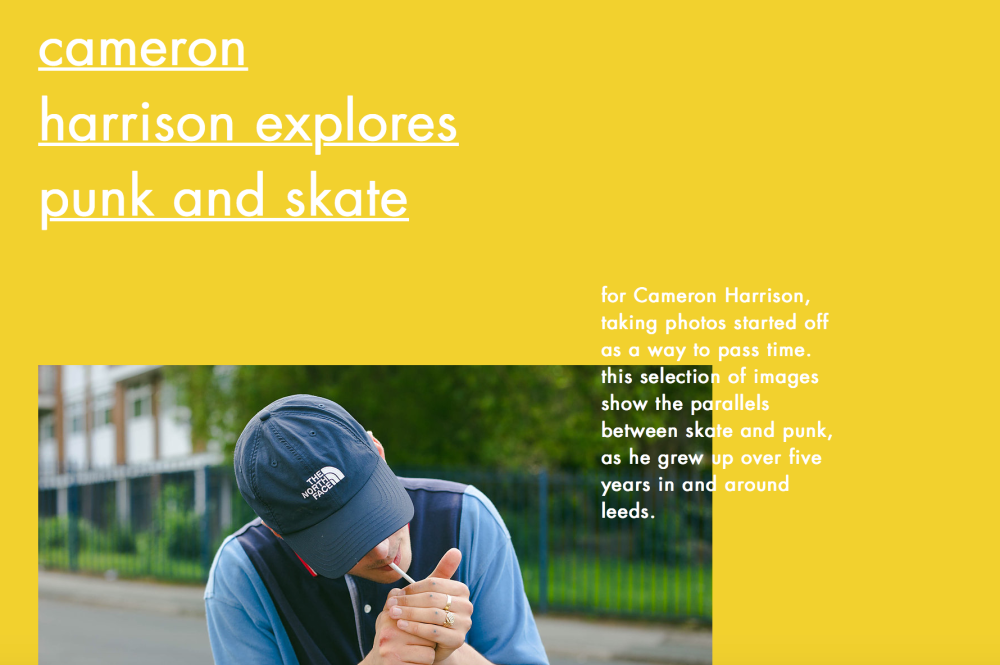
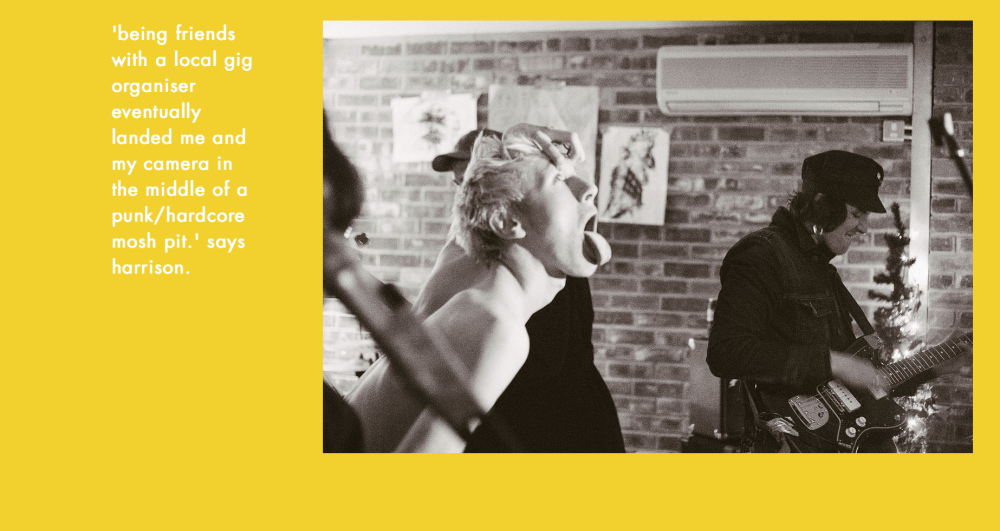
It’s a music, arts and fashion magazine run by Falmouth University students and at the moment it’s an online publication but as of right now they’re creating a zine and the main reason I decided to model my spreads after Bloc Magazine is because they’ve taken an interest in my work and may publish it in their first issue. This is also the magazine I used to pitch my work to, I responded to a post from them asking for submissions so I submitted some of these photographs and they responded to me on Instagram saying they’re interested in my work and would like to see more of it. Another big reason why I chose to use this as the publication I pitched to is because I’m more likely to get published by them than any other magazine and seeing as they’re close by there’s the possibility for a strong collaboration between me and the editors, so I saw this as a good opportunity to get published for the first time.
My spreads:


Now, in terms of my spreads, I again used http://www.myfonts.com to find the font which was Futura Medium. and did my best to model my spreads after their online publication to anticipate what it is they might be looking for in the future for their zine.
And finally the last spread. I got up early one morning and went to the Smithfield Meat Market for the first time and got to see what the early morning market is like. It was a pretty great experience, it’s really unique to be surrounded by this bustling market at that hour when everything else apart from the nearby cafes are shut and the streets are quiet with the soft morning light.
I modelled my spread after Huck Magazine, which was the only magazine I really thought this content would be able to live in considering it’s quite a photojournalistic story. So here’s the Huck spreads I tried to model mine after:


Now to compare it to my spreads:
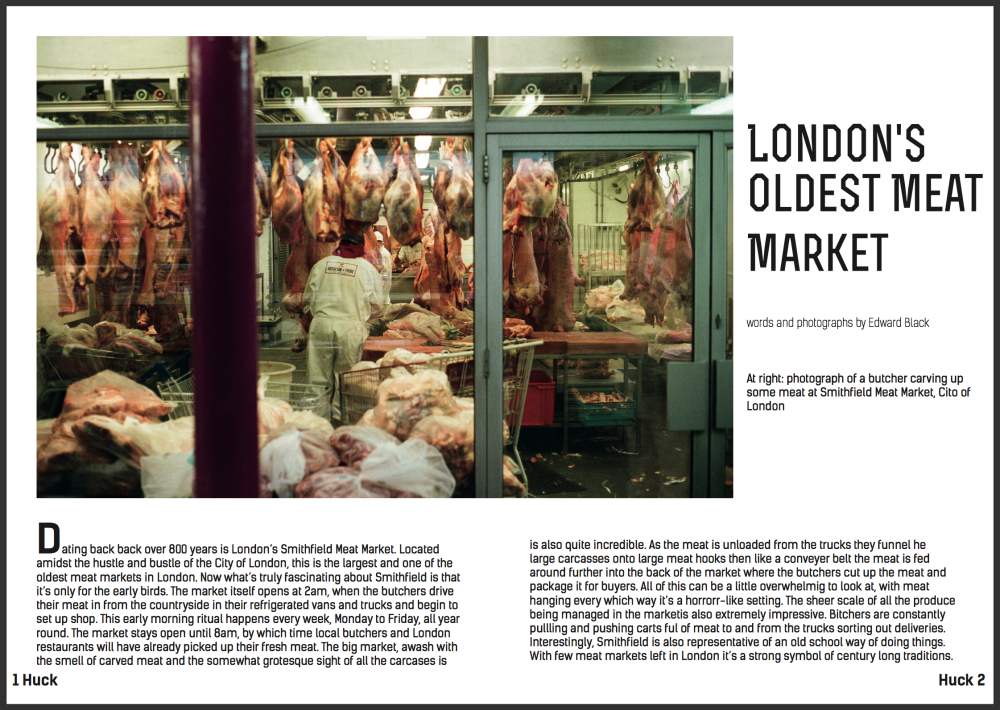
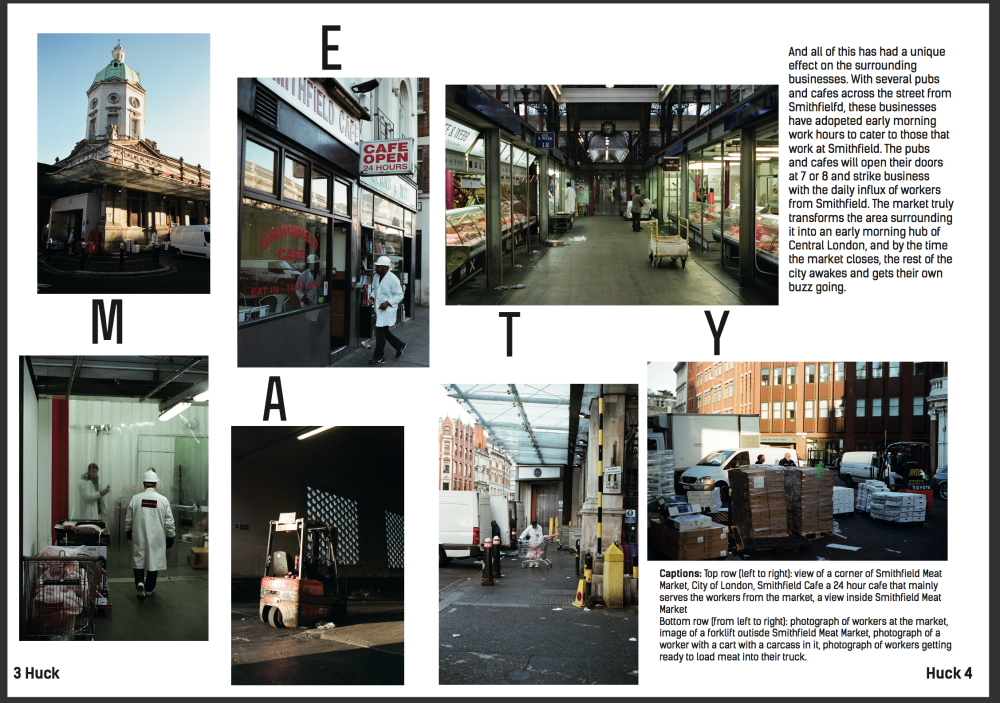
I think I did an alright job with trying to model mine after Huck, I wasn’t able to find any similar font so I decided to download the Rex and Kensal fonts online because I think they fit the best. Again I really struggled with my writing but it’s something I know I have to work on. This spread was one of the more difficult ones because it was only one shoot it was hard for me to get into the storytelling aspect with the writing, however I do think the photographs do a good job of telling the story of Smithfield Meat Market.
To conclude, this module was the most useful module yet considering it involves a lot of what I hope to be doing after I leave university seeing as it’s one of my goals to be able to work for or get work published in any of these kinds of magazines. It was also difficult to get the hang of InDesign and the writing style of this kind of work but from a photographic standpoint I really enjoyed this work, especially given that I shot everything on 35mm film, which was really fun for me because it’s my preferred format compared to digital photography.




